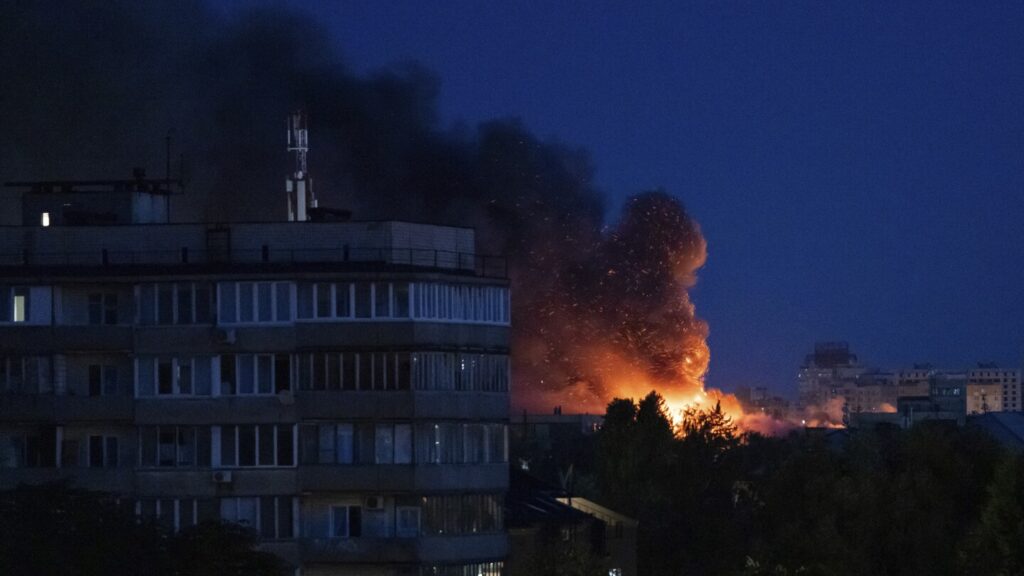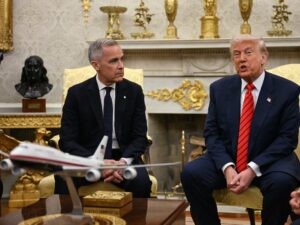
WASHINGTON — In a significant shift, the United States has decided to halt certain weapon shipments to Ukraine, citing concerns over diminishing U.S. stockpiles. This decision, announced by officials on Tuesday, marks a setback for Ukraine as it faces escalating Russian attacks.
The munitions in question were initially promised under the Biden administration to bolster Ukraine’s defenses in its ongoing conflict with Russia. The pause reflects a reevaluation of priorities under President Donald Trump, following a thorough review by the Defense Department of current U.S. stockpiles.
“This decision was made to put America’s interests first following a review of our nation’s military support and assistance to other countries across the globe,” White House spokesperson Anna Kelly stated. She emphasized the continued strength of the U.S. Armed Forces, pointing to recent missile strikes ordered by Trump against nuclear sites in Iran.
Pentagon’s Concerns Over Weapon Stockpiles
The Pentagon’s review revealed that certain weapons stocks were too low to fulfill previously pledged shipments to Ukraine. A U.S. official, speaking anonymously, confirmed that some pending shipments will not proceed, though specific details on the withheld weapons were not disclosed.
Pentagon spokesperson Sean Parnell reassured that “America’s military has never been more ready and more capable,” attributing this readiness to a major tax cut and spending package aimed at modernizing defense systems.
Impact on Ukraine Amid Escalating Conflict
The halt in weapon shipments is a blow to Ukraine, particularly as Russia intensifies its aerial attacks. These developments further complicate peace efforts, which have seen little progress despite President Trump’s initiatives. Talks between Russia and Ukraine have stalled, leaving the conflict at a precarious juncture.
The U.S. has been a significant supporter of Ukraine, providing over $66 billion in military assistance since the conflict began in February 2022. However, the U.S. has consistently urged its allies to contribute more, especially in terms of air defense systems. Many Eastern European countries remain hesitant, fearing their own security vulnerabilities.
Shifting U.S. Policy on Military Aid
Elbridge Colby, the Defense Department undersecretary for policy, stated that the U.S. continues to offer the president robust options for military aid to Ukraine, aligning with the goal of ending the war. However, the department is also adapting its approach to maintain U.S. military readiness.
President Trump’s recent meeting with Ukrainian leader Volodymyr Zelenskyy at the NATO summit highlighted potential future aid, including the possibility of providing Patriot air defense missile systems.
“They do want to have the antimissile missiles, OK, as they call them, the Patriots,” Trump remarked, acknowledging their effectiveness and the strategic importance of such systems.
Trump Administration’s New Outlook
This development signals a broader shift within the Trump administration regarding military aid to Ukraine. Defense Secretary Pete Hegseth has emphasized redirecting funding towards Trump’s primary objectives and advocated for a negotiated peace, which he argues would enhance America’s global standing.
Hegseth has also called for Europe to take greater responsibility for its defense, a stance that aligns with Trump’s broader foreign policy goals. Despite these changes, Hegseth assured lawmakers that some U.S. security assistance for Ukraine remains in the pipeline, albeit at reduced levels.
Notably, Hegseth’s absence from a recent international military aid coordination meeting, a group formed by his predecessor, underscores the administration’s evolving stance. This shift has seen the U.S. step back from its leadership role, passing responsibilities to allies like Germany and the United Kingdom.
As the situation develops, the U.S.’s recalibrated approach to military aid will likely continue to influence the dynamics of the Ukraine-Russia conflict and the broader geopolitical landscape.





